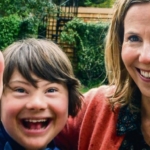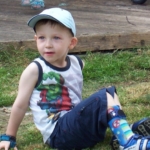Effectiveness of cranial remolding orthoses for the treatment of deformational brachycephaly

3D Scanning for Plagiocephaly Helmet Therapy. OAPL Australia.
| Abstract |
| Introduction |
This retrospective chart review aims to analyze the effects of initial severity and age on cranial remolding orthosis (CRO) treatment of deformational brachycephaly. It is predicted that younger cases will show greater rates of correction and more severe cases will require longer treatment times. With the data collected, statistical analysis will aid in the development of a measurement scale for categorizing severity for brachycephaly.
| Methods |
Subjects were diagnosed with brachycephaly and started CRO treatment between 3 and 18 months of age. Subjects had a cranial vault asymmetry index lower than 3.5 and cranial index of 90% or higher. Subjects were excluded if they had comorbidities affecting growth, failed to complete treatment, or were noncompliant. In total, 2977 charts were retrospectively reviewed, and 253 subjects were included.
| Results |
Statistical analyses showed that age at treatment initiation is significantly correlated with final cranial index and treatment duration, and initiation at a younger age allows for more correction and shorter treatment durations. In addition, a receiver operating characteristic curve analysis showed a statistically significant, inverse relationship between initial severity and the likelihood of achieving correction (milder head shapes are more likely to achieve correction).
| Conclusion |
Together, these findings suggest that CRO treatment should be initiated as early as possible and the head shape deformation should not be allowed to progress without intervention.
| Clinical Relevance |
Clinical decisions and caregiver expectations during orthotic treatment should be guided by historical treatment outcomes. This study examines the influence of initial age and cephalic index severity on CRO treatment outcomes for deformational brachycephaly.
| References |
A Retrospective Evaluation of the Effectiveness of Cranial Remolding Orthoses for the Treatment of Deformational Brachycephaly, Weigand, Kellen MPO; Millay, Kelly MPO; Wang, Jijia PhD; Graham, Tiffany MSPO, CPO, LPO, FAAOP. Journal of Prosthetics and Orthotics 36(2):p 69-79, April 2024. DOI: 10.1097/JPO.0000000000000416
| Further reading |
CRANIAL ORTHOSES, 50th Academy Annual Meeting & Scientific Symposium, Journal of Prosthetics and Orthotics 36(2S):p 1-4, April 2024. DOI: 10.1097/01.JPO.0001007548.57659.36. PDF
- Time to Successful Outcome versus Treatment Duration in Cranial Remolding Orthosis Treatment, A.M. Petz, C.J. Richards, C.M. Vallery, M. Yosef, S.H. Khalatbari, C.J. Frank, J.A. Richards University of Michigan Orthotics & Prosthetics Center, Ann Arbor, Michigan
- Setting Expectations for Cranial Remolding Orthosis Treatment Based on Changing Rates of Cranial Vault Asymmetry, C.M. Vallery, A.M. Petz, C.J. Richards, M. Yosef, S.H. Khalatbari, C.J. Frank, J.A. Richards. University of Michigan Orthotics & Prosthetics Center, Ann Arbor, Michigan
- A Pilot Examination of 3-Dimesional Changes While Repositioning Infants from 2–4 Months of Age, T. Graham, V. Moses, J. Wang, S. Briggs, O. Sheffer, A. Payne, L. Pauline, T. Lam, A. Blasingim, C. Holley, T. Marlow, R. Hallac. University of Texas Southwestern Medical Center, Dallas, Texas
- Three Dimensional Changes in Deformational Head Shapes, T. Graham, V. Moses, J. Wang, S. Briggs, O. Sheffer, A. Payne, L. Pauline, T. Lam, A. Blasingim, C. Holley, T. Marlow, R. Hallac. University of Texas Southwestern Medical Center, Dallas, Texas.
Success Rates of Cranial Remolding Orthosis Treatment of Plagiocephaly Based on Initial Presentation, Richards, Chelsea J. MPO, CO; Petz, Alyssa M. MPO, CO; Vallery, Claire E. MPO, CO; Yosef, Matheos PhD; Khalatbari, Shokoufeh H. MS; Frank, Christopher J. MD, PhD; Richards, Jennifer A. MA, CPO. Journal of Prosthetics and Orthotics ():10.1097/JPO.0000000000000481, August 11, 2023. DOI: 10.1097/JPO.0000000000000481
Development and Validation of a Prediction Model for the Treatment Time of Deformational Head Shapes Using a Cranial Remolding Orthosis, Graham T, Wang J. Children (Basel). 2022 Mar 4;9(3):354. doi: 10.3390/children9030354. Full text, PDF
Significant Factors in Cranial Remolding Orthotic Treatment of Asymmetrical Brachycephaly, Graham T, Millay K, Wang J, Adams-Huet B, O’Briant E, Oldham M, Smith S. J Clin Med. 2020 Apr 5;9(4):1027. doi: 10.3390/jcm9041027. Full text, PDF
Effects of Initial Age and Severity on Cranial Remolding Orthotic Treatment for Infants with Deformational Plagiocephaly, Graham T, Adams-Huet B, Gilbert N, Witthoff K, Gregory T, Walsh M. J Clin Med. 2019 Jul 24;8(8):1097. doi: 10.3390/jcm8081097. Full text, PDF
Relationship between starting age of cranial-remolding-orthosis therapy and effectiveness of treatment in children with deformational plagiocephaly, Han MH, Kang JY, Han HY, Cho YH, Jang DH. Childs Nerv Syst. 2017 Aug;33(8):1349-1356. doi: 10.1007/s00381-017-3427-9. Epub 2017 May 8.






